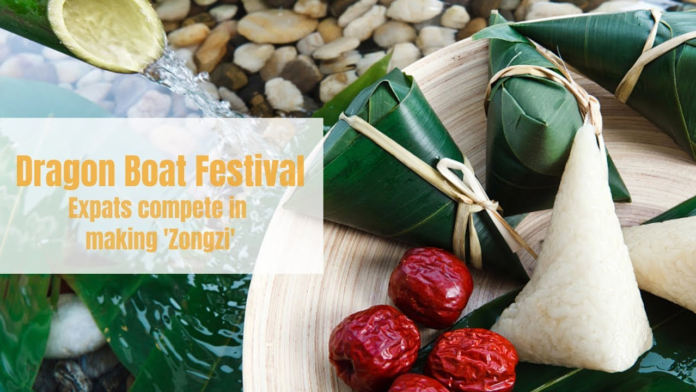Any proper Dragon Boat Festival celebration would be incomplete without the ubiquitous and yummy Dragon Boat Festival Zongzi. These pyramid-shaped packets, made from glutinous rice, are wrapped in bamboo or reed leaves, and they’re not just delicious —they’re a crucial facet of the festival’s history and customs. But what is the origin story of this iconic food? So let us peel back the layers and find out the history behind their deliciousness.
A Significant Tribute: A Devotional to Qu Yuan
The story of Dragon Boat Festival Zongzi, known for its rice dumplings, is closely related to the legend of Qu Yuan, a venerated poet and statesman. When Qu Yuan, in atrocious despair, finally drowned himself in the Miluo River, the local people who were very sad about the death of Qu Yuan wanted to pay tribute to him. To keep fish and other river creatures from devouring his body, they cast rice into the river.
But soon they found that the rice was being consumed before it made it to Qu Yuan. The rice would be wrapped in bamboo leaves, the thinking goes, and the annoying smell of the leaves would be powerful enough to drive them away so that they would not mind the rice, which could eventually be delivered to Qu Yuan. This snack of rice dumplings wrapped in leaves is the earliest version of what we now know as Dragon Boat Festival Zongzi.
Individuality Over Time: Evolution of Flavors
Over the centuries, the Dragon Boat Festival Zongzi developed into a kind of culinary art. While glutinous rice wrapped in leaves is a commonality (the basic concept), the fillings and flavors differ greatly based on regional preference and family tradition.
- Savory Zongzi: These are usually filled with ingredients like pork belly, salted duck egg yolk, mushrooms, and dried shrimp. The savory flavors combine for a decadent and delicious snack.
- Tasty sticky rice: These are usually filled with sweet red bean paste, jujubes (red dates), or lotus seeds. The sweet zongzi is a wonderful counterpoint to savory varieties.
- Regional Differences in Zongzi: There are different types of zongzi in different regions. For instance, in some places you may meet zongzi flavored with alkaline water so as to have a peculiar texture and slightly yellow color. Others might consist of peanuts or other regional delicacies.
- Not Only Food: A Symbol of Remembrance and Protection
The tangyuan is symbolic. Zongzi has importance beyond taste. The act of wrapping is also viewed as protective, guarding what is inside. The sticky rice signifies connection and togetherness, while the different fillings represent abundance and luck.
That is the reason why to eat during the Dragon Boat Festival. Zongzi is one method to enter the traditional Dragon Boat Festival, pray for Qu Yuan Zhu Yu, and discover the dragon boat competition culture. It’s a delicious way to add meaning to this important holiday.
Family Tradition: Making Your Own Zongzi
Every family has its own version of the Dragon Boat Festival Zongzi recipe that is passed down from generation to generation. Making zongzi is a great way to spend quality time with family, connect with your cultural roots, and create memories you will cherish for a lifetime.
So the next time you savor a delicious Dragon Boat Festival Zongzi, remember the rich history and culture behind this legendary delicacy. It’s much more than sustenance; it’s a means of remembrance, protection, and cultural pride.
Stop for the Dragon Boat Festival 2025.
2025: 31 May (Dragon Boat Festival 端午节) The date of the Dragon Boat Festival falls on the fifth day of the fifth month in the lunar calendar, which generally corresponds to late May or June in the Gregorian calendar.
If you want to participate in the excitement or just want to stay in the know on what’s coming up, check this link for registration, schedule, and more!

